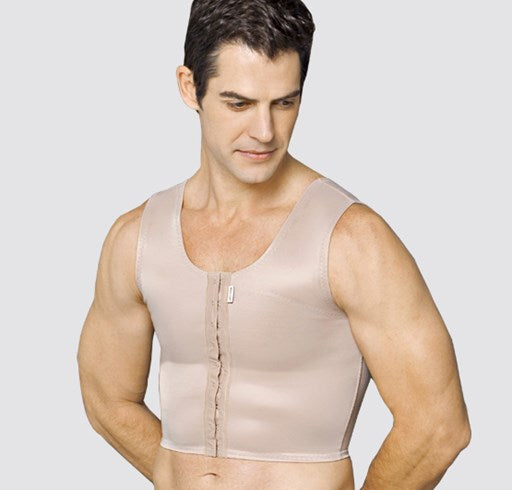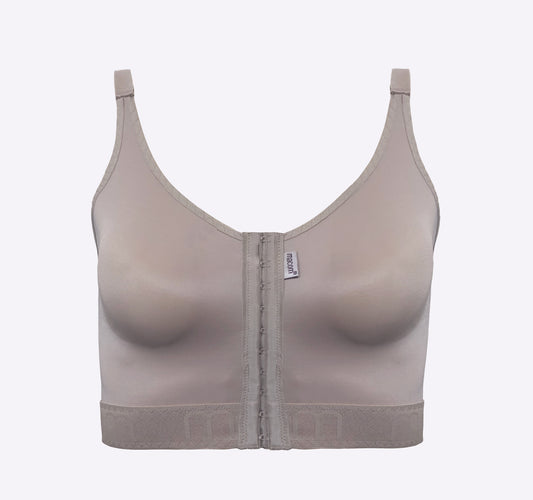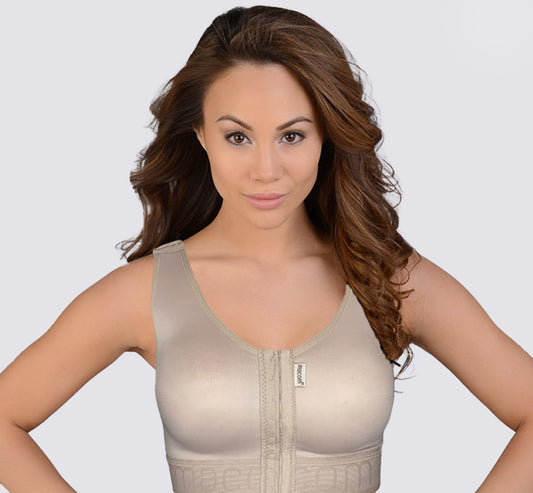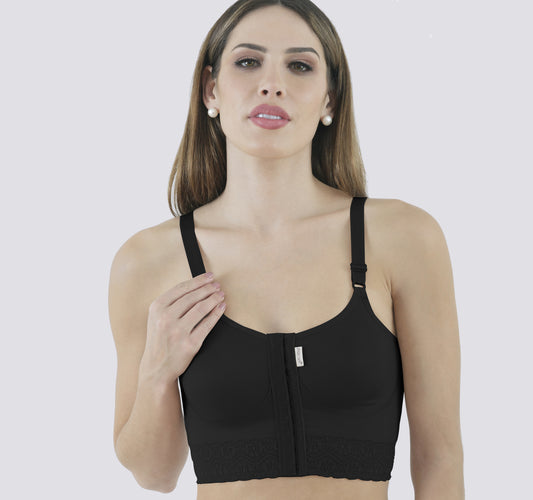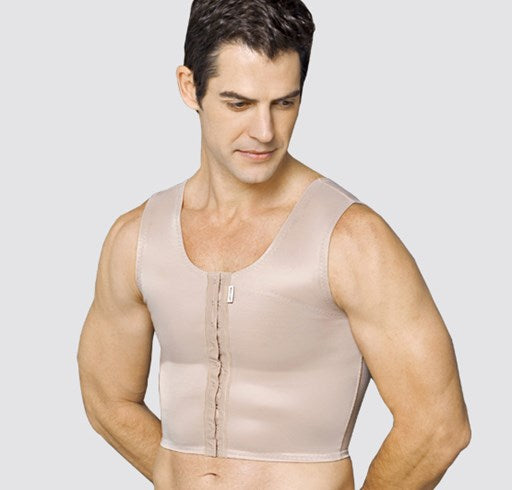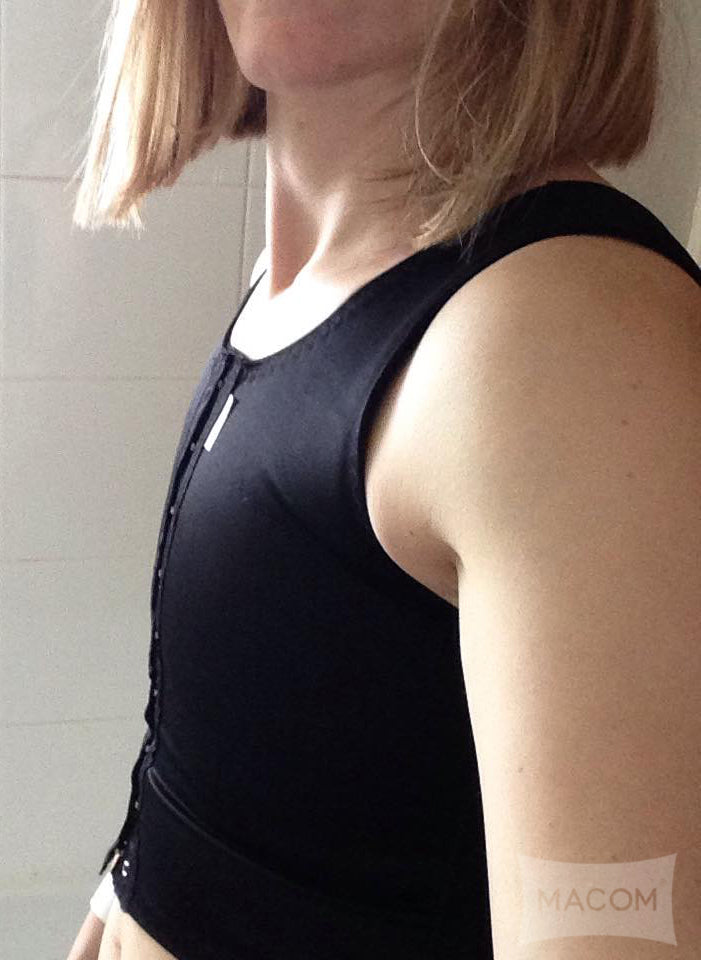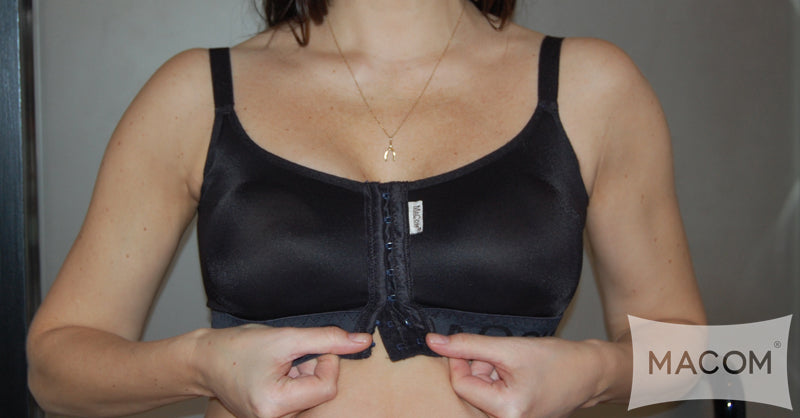Gynaecomastia is a common condition and one that macom® is very familiar with. We get many questions from patients about the procedure and how to best support their recovery with our compression garments.
To help shed some light on gynaecomastia for patients considering the procedure, below we have:
- A short explainer video from Dr Hassan Nurein which details how gynecomastia surgery works, with a testimonial from one of his patients that offers insights into how the procedure and its results feel.
- A brief guide for patients on the causes, treatments and recovery aids for gynaecomastia.
Video: Gynaecomastia surgery & patient testimonial
If you want to see how gynaecomastia surgery works, this video from Dr Nurein of Harley Street London, shares how the gynaecomastia surgery (with skin tightening) process works. It also includes a gynaecomastia patient's testimonial about the surgery and how he feels after the procedure.
About Dr Hassan Nurein, surgeon at Harley Street London
Dr Hassan Nurein specialises in Gynecomastia surgery. He is a member of the Royal College of Surgeons of Edinburgh (MRCS of Edinburgh), Board Certified in Cosmetic Surgery (IDoABCS) and has many qualifications alongside his experience performing gynaecomastia surgery on over 2000 patients.
Gynaecomastia: Patient guide
What is gynaecomastia?
Gynaecomastia, sometimes casually referred to as "man boobs", is a common condition where a man's breasts become larger than normal. It most often occurs in teenage boys and older men but can affect men of any age.
Causes of gynaecomastia
There are numerous causes of gynaecomastia, some common and some rare.
Common causes of gynaecomastia
Hormone imbalance
Gynaecomastia can be caused by an imbalance in testosterone and oestrogen levels, since oestrogen is what causes breast tissue to be developed. All men produce both testosterone and oestrogen, though testosterone is typically at a much higher level which stops breast tissue from growing. Where testosterone levels don't override this function, due to diminished levels, breast tissue can develop.
Extreme obesity
Being very overweight can cause gynaecomastia as extreme obesity increases oestrogen levels. Excess fat around your body can also cause enlargement of breast tissue.
Puberty
Hormone levels will naturally vary during puberty and many teenage boys will experience some degree of breast enlargement. For most teenagers, gynaecomastia will dissipate as they age and hormone levels stabilise. But for some, it can continue into adulthood.
Older age
Older men produce less testosterone, and will typically have more body fat. As a result, more oestrogen is produced and this rebalancing of hormones can lead to breast tissue growth.
Being a newborn
At birth, male babies can be affected by gynaecomastia as oestrogen has passed through the placenta from parent to child during pregnancy. This is temporary and following birth gynaecomastia tends to go away within a few weeks.
Uncommon causes of gynaecomastia
There are some outside influences, conditions and diseases that can also cause gynaecomastia, though these are quite rare. They include:
- Certain medicines – a side effect of some medications can cause gynaecomastia, such as anti-ulcer drugs and heart disease medicines.
- Particular illegal drugs – some drugs can also cause gynaecomastia, such as cannabis and anabolic steroids.
- Health conditions/diseases – conditions like kidney failure or diseases like liver disease can cause gynaecomastia as their healthy functioning impacts control over hormone levels.
- Klinefelter syndrome – a very specific and rare genetic disorder whereby a person has an extra X chromosome.
- Testicular infection or lumps – as the testicles are the prime producer of testosterone, their functioning will impact the balance of hormones within the body.
- Breast cancer is rare in men and can present as gynaecomastia.
Gynaecomastia treatment
The need for treatment for gynaecomastia will depend on the patient and the underlying cause. If gynaecomastia is caused by extreme obesity then losing weight can help to alleviate it. Similarly, if it is a response to drugs (be they illegal or prescribed) then gynaecomastia may dissipate if the person stops taking the drug. If it is caused by a hormone imbalance then your GP can suggest medication to adjust this. Some people may not feel the need to deal with their gynaecomastia.
For those who do want to address their gynaecomastia, and where it is not easily remedied in another way, one of the most direct ways of dealing with it is surgery.
Gynaecomastia surgery
Gynaecomastia surgery involves the surgical removal of the glandular breast tissue and liposuction to remove the excess fat. This is a common cosmetic surgery procedure that has been carried out for years. Gynaecomastia surgery is typically a day procedure.
Can gynaecomastia come back after surgery?
Gynaecomastia surgery involves leaving behind a thin layer of breast tissue under the nipple to prevent hollowing, this on rare occasions can grow back and cause gynaecomastia recurrence.
Dealing with excess skin from gynaecomastia
In some cases of gynaecomastia, the removal of significant amounts of fat and breast tissue can leave excess skin, so some gynaecomastia surgeries can include skin tightening. One way of doing this is called BodyTite – this is featured in the case study video below.
What is BodyTite?
BodyTite is a body contouring procedure. It uses radio frequency to tighten the skin tissue when fat has been removed. Patients will typically choose to have BodyTite done when they want to avoid scarring under the breast area and/or around the nipple, which is caused by skin removal surgery.
Recovering from gynaecomastia
After gynaecomastia surgery, as with all surgical procedures, the patient will need time to recover. Typically, a patient will take a couple of days off before returning to work or normal day-to-day activities.
Exercising after gynaecomastia surgery
Patients are advised not to undertake cardio exercise or strenuous activities for around two weeks, though this timeline will depend on how healing progresses so each patient will need to speak to their GP about when they can start doing this again. Patients are able to incrementally introduce upper body and chest workouts after four weeks – again, on the approval of the surgeon based on their progress in recovery.
Compression vests for recovery from gynaecomastia surgery
After gynaecomastia surgery, there will be swelling of the chest area and tightening around the chest muscles and your surgeon will suggest a support garment to help aid recovery and minimise discomfort.
These chest compression garments are typically vests, with or without sleeves, and can be worn every day during recovery.
Thinking of gynaecomastia surgery?
You can get in touch with our team to discuss the gynaecomastia vest and other garments to help support your recovery post-surgery.

